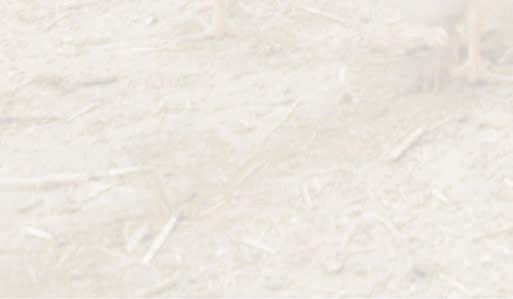
3 minute read
100 grams extra growth
from PoultryNL


Advertisement





Eff ective disinfection during the vacancy results in better growth. That sounds logical, but it has now also been proven by research. Willem Dekkers (Royal GD) and Flamur Llapashtica (ForFarmers De Hoop) are working on better monitoring systems to reduce virus pressure in the poultry house.
How successful was the cleaning? And can anything be improved? The vacancy period is hectic, you are under time pressure, you are stressed. It is possible that unconsciously you may cut corners or spend less time on and pay less attention to something.
‘Therefore, always make a good plan’, says
Flamur Llapashtica. Earlier in his career, he worked on poultry house cleaning and disinfection, salmonella control protocols, and general biosecurity. Nowadays, he is a feed consultant, but cleaning and disinfection still has his specifi c interest.
‘Cleaning is perhaps more important than disinfection. By cleaning well and consistently with plenty of water and using a long-lasting, foaming cleaning agent, you can achieve a great reduction in bacteria.
This makes the eff ect of the chosen disinfectant automatically more eff ective.’
But how do you know how clean the barn is?
Field study
After cleaning and disinfection of the house, highly resistant viruses can still remain in porous materials, which cannot be checked with the Rodac method. GD launched the VIR check in 2019 to determine the virus pressure in the poultry house. Willem Dekkers, poultry veterinarian at GD explains: ‘Together with enthusiastic veterinarians in the fi eld, we set to work. For six months, we sampled a large number of fl ocks and collected the technical results. We compared these with the VIR check scores. It turned out that by reducing the virus pressure in the house, the fl ocks performed better. We can see an improvement in feed conversion, mortality and signifi cantly better growth: up to 100 grams extra growth over the entire cycle.’ Together with ForFarmers De Hoop and veterinarians, the VIR check has been improved. ‘It appears that the intestinal viruses studied peak about fi ve to six days after infection. So if you fi nd them in the chicks, it means that they must have become infected when they entered the house. Chicks that have to defend themselves against it in early life have less energy left to grow. Moreover, they are also more susceptible to other germs, because the immune system is already busy.’
Disease control programmes
GD has been active in monitoring and controlling specifi c diseases for over a century and has developed many animal health programmes for the Dutch livestock sector. ‘In this way, we contribute to controlling, reducing and in some cases even eradicating and obtaining accreditation for specifi c diseases. We are now applying this knowledge and experience in the development of international disease control programmes, in line with the situation and regulations in the relevant country.’ Poultry programmes focussed on antibiotic and mortality reduction, Salmonella, Mycoplasma gallisepticum and M. synoviae support farm managers and their veterinarians to minimise the risk of a disease outbreak, improve animal health and increase profi t.


Flamur Llapashtica (left) and Willem Dekkers (right).
100 grams extra growth in a clean house
Always make a good plan!











